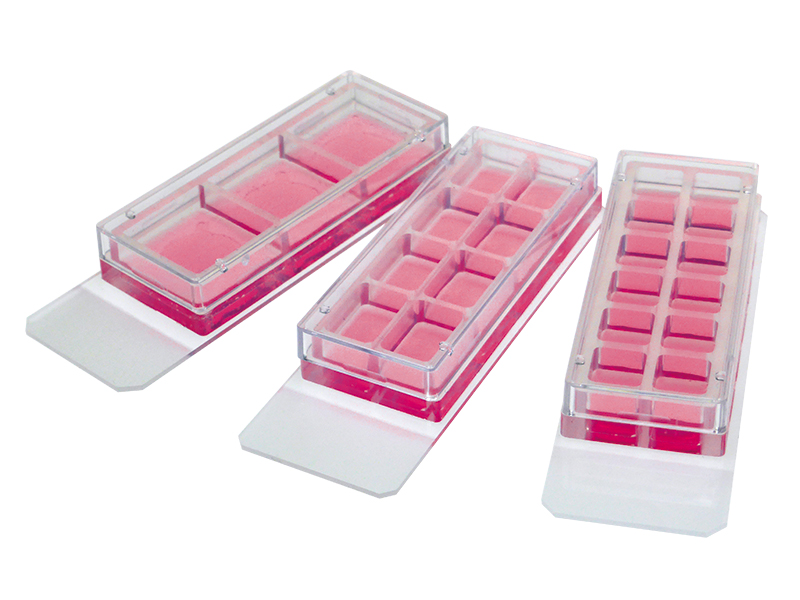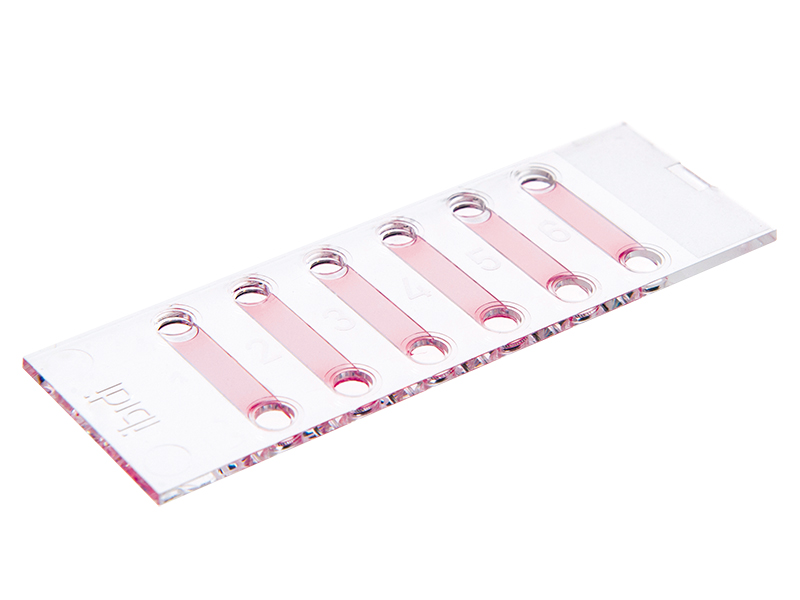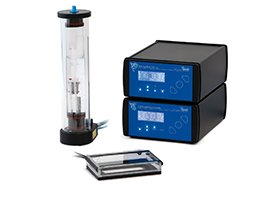Inverted and Upright Microscopy at a Glance

Inverted Microscope
Inverted microscopes are popular for live cell imaging, because:
- Cells sink to the bottom and onto the coverslip for adherence
- Sample access from the top (e.g., for liquid exchange or micropipettes)
- No contact between objective and sample—sterile working conditions are possible

Upright Microscope
In cell biology, upright microscopes are used for:
- Samples squeezed between a slide and coverslip
- Fixed samples, such as cells and tissue sections
Not recommended for live cell imaging.
Inverted Microscopes
Applications:
Inverted microscopy is a very popular technique for live cell imaging. Here, living cells are observed through the bottom of a cell culture vessel. This technique has several advantages over upright microscopy.
Most cells naturally sink to the bottom of the vessel and—if no suspension cells are used—adhere to the surface, meaning that they are spread across one focal plane. When growing in vessels that are suitable for inverted microscopy, cells have access to larger amounts of medium than if they were squeezed between a coverslip and a slide. In addition, sample access from the top is possible, for medium exchange or micropipettes, for example. Another very important advantage is sterility: as there is no contact between the objective and the sample, sterile working conditions are guaranteed.
Principle:
In an inverted microscope, the source for transmitted light and the condenser are placed on the top of the stage, pointing down toward the stage. The objectives are located below the stage pointing up. The cells are observed through the bottom of the cell culture vessel. To meet the criteria for successful inverted microscopy, the bottom of the culture vessel must have the highest optical features, which are given for the ibidi Polymer Coverslip and the ibidi Glass Coverslip.

Schematic of an inverted microscope. Note the thin vessel bottom, through which the cells are observed.
ibidi Solutions:
|
All ibidi μ-Slides, μ-Dishes, and μ-Plates are designed for use with different types of inverted microscopes that include standard cell culture models, as well as complex microscopes, such as widefield fluorescence, confocal, spinning disk, and super-resolution. The ibidi μ-Slides, μ-Dishes, and μ-Plates are all equipped with a thin coverslip bottom with excellent optical properties—the ibidi Polymer Coverslip. Optionally, many ibidi labware products are also produced with a thin, coverslip D 263 M Schott glass bottom (#1.5H) for special microscopic applications (e.g., super-resolution microscopy and TIRF). |
|
|
The ibidi Stage Top Incubators provide a fully functional stage top incubator for establishing in vivo-like conditions on every inverted microscope that has a multiwell plate holder or a frame. |
Upright Microscopes
Applications:
In cell biology, upright microscopes are used for phase contrast or widefield fluorescence microscopy of living cells or samples that are squeezed between a slide and coverslip. An additional application is the microscopy of fixed cells or tissue sections.
In principle, upright microscopes can be used for live cell imaging, especially with dipping objective lenses. This type of system is often used for larger samples like tissue and animals.
However, there are several disadvantages of upright microscopes when compared to inverted microscopes. In general, the working distances in upright microscopes are longer, which leads to lower resolution and weaker fluorescence signals. In contrast to inverted microscopes, upright microscopes do not allow for the use of objectives with high numerical aperture directly on the coverslip bottom, on which the cells adhere. Therefore, ibidi recommends inverted microscopes for live cell imaging.
Principle:
In an upright microscope, the source of transmitted light and the condenser are located below the stage, pointing up. The objectives are placed on top of the stage, pointing down. The specimen is observed from the top through the lid of a petri dish or a coverslip. In some systems, the objective lens is dipped into the culture medium without any coverslip.

Schematic of an upright microscope. Note that the cells are squeezed between the slide and a coverslip.
ibidi Solutions:
|
Some ibidi labware products are suitable for upright microscopy: With the 3 | 8 |12 Well Chamber, removable, ibidi offers chamber slides with a standard glass slide bottom and a removable silicone chamber. After immunofluorescence staining and mounting with a coverslip, they are suitable for use with upright or inverted microscopes. |
 |
| The μ-Slide VI - Flat is compatible with upright or inverted microscopy. |  |







